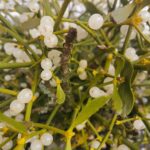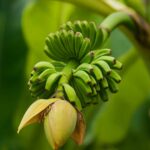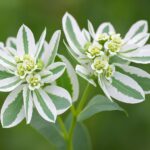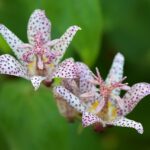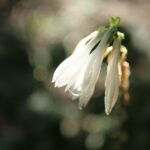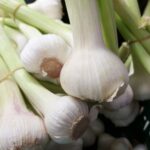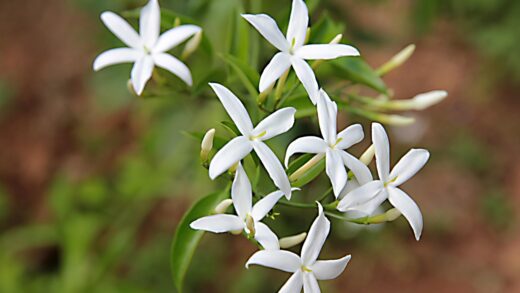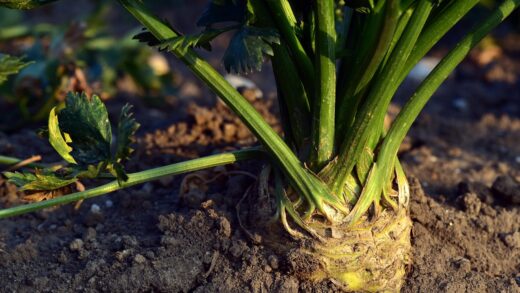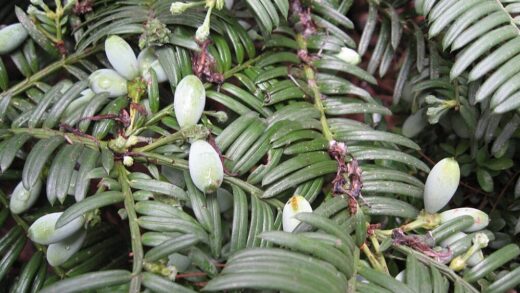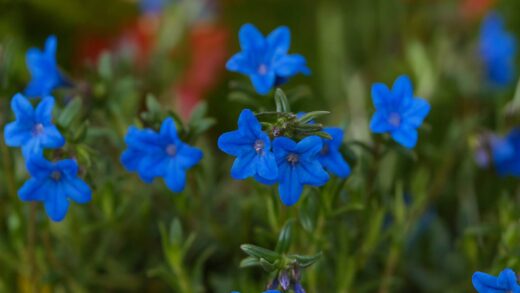The cornflower, this beautiful sky-blue flower, originates from the temperate regions of Europe and Western Asia, where it was originally known as a characteristic weed in grain fields, especially wheat and rye crops. This origin is key to understanding its water needs, as it adapted to an environment where water supply is often fluctuating and soils are not always ideal. Throughout its evolution, the plant developed excellent drought tolerance, allowing it to successfully compete with cultivated crops for water and nutrients. As a result, the cornflower is considered a relatively low-maintenance, rewarding plant in modern gardens, tolerating short dry periods well without immediately requiring irrigation.
One of the anatomical foundations of the cornflower’s exceptional drought tolerance is its deep taproot system. This type of root allows the plant to absorb moisture from deeper soil layers, which shallow-rooted plants can no longer reach. Developing such an advanced root system takes time, which is why young, germinating plants are more sensitive to water shortages. However, once the plant strengthens and the taproot reaches the appropriate depth, the cornflower becomes more self-sufficient, and its dependence on surface precipitation or irrigation significantly decreases. This characteristic makes it particularly suitable for extensive flowerbeds or naturalistic gardens.
Beyond the root system, the structure of the cornflower’s leaves and stem also contributes to efficient water management. The narrow, lance-shaped leaves have a smaller surface area than those of large, broad-leaved plants, which reduces the rate of transpiration. Additionally, the leaves and stem are often covered in fine, silvery hairs that, on one hand, reflect some sunlight, reducing heat absorption, and on the other hand, trap air moisture near the leaf surface, creating a kind of microclimate that also moderates water loss. These physiological adaptations collectively ensure that the plant makes the most out of the least amount of water.
In summary, the cornflower’s drought tolerance, rooted in its natural habitat and evolutionary past, predestines it to be a low-maintenance garden ornamental. However, it is important to emphasize that drought tolerance is not synonymous with a complete lack of water need; it simply means the plant tolerates water-deficient conditions better than many other garden flowers. The key to successful cultivation, therefore, lies in understanding the factors that influence its precise water requirements and tailoring irrigation to them, rather than following a rigid, predetermined schedule.
Factors influencing water requirements
The water requirement of the cornflower is fundamentally determined by the type and structure of the soil in which it is planted. The plant prefers well-drained, loose, sandy, or loamy soils, which most closely resemble the conditions of its original habitat. Such soils are not prone to waterlogging, which can be fatal to the root system, but they also dry out more quickly, especially in the upper layers. In contrast, heavy clay soils can retain moisture for a longer period, which may reduce the frequency of irrigation, but also increases the risk of overwatering and root rot if drainage is inadequate.
More articles on this topic
Environmental and weather conditions also play a critical role in the plant’s water use. High temperatures, strong, drying winds, and low humidity all increase the rate of evaporation and plant transpiration (collectively evapotranspiration), causing the cornflower to require more water. On a sunny, hot, windy day, the plant’s water loss can be many times that of a cool, cloudy, calm day. The amount and distribution of natural precipitation are also crucial; a heavy rain can cover the plant’s needs for weeks, while prolonged periods of drought necessitate supplemental irrigation.
The developmental stage of the plant is also a significant factor, as the water requirement of the cornflower changes continuously throughout its life cycle. During the germination period after sowing and the early development of the seedling, the soil surface must be kept consistently slightly moist for successful establishment. In the vegetative growth phase, when the plant is developing its foliage, the water need is moderate but steady. The peak period is during flower bud formation and blooming, when the plant uses the most water to ensure a lush and long-lasting floral display. After flowering, during seed maturation, the water requirement decreases again.
Finally, the growing environment, or the specific planting context, also influences the need for irrigation. In a densely planted cornflower bed, the plants compete for water, so the soil is depleted more quickly than if there were only a few plants spaced further apart. The microclimate is also an important factor: a bed located in a south-facing position next to a wall or pavement will heat up much more and dry out faster than one that receives partial shade in the afternoon. Cornflowers grown in containers or planters have a particularly high water demand, as the limited volume of soil heats up and dries out quickly.
Practical implementation of irrigation
The most important principle of an optimal irrigation strategy is to avoid a rigid, calendar-based watering schedule. Instead, one should rely on observing the plant and the soil to determine the need for water. The surest sign of a water deficit is when the plant’s leaves begin to wilt slightly during the hottest part of the day but do not fully recover their turgor by evening. Another effective method is to check the soil moisture: insert your finger 2-4 centimeters deep into the soil; if the soil is completely dry at this depth, it is time to water. The goal is to allow the soil to dry out slightly between waterings, which encourages the roots to penetrate deeper.
More articles on this topic
When it comes to watering, the principle of “less frequently, but more thoroughly” should be followed over the practice of “often, but shallowly.” Shallow, frequent watering only moistens the top layer of soil, encouraging the roots to stay near the surface, making the plant more vulnerable and dependent on irrigation. In contrast, a deep, penetrating watering that moistens the soil to a depth of at least 15-20 centimeters encourages the taproot to grow towards the deeper, moister soil layers. This method results in a much more resilient, self-sufficient plant in the long run.
The choice of irrigation method is also crucial for efficiency and plant health. The most recommended methods are drip irrigation or the use of soaker hoses. These systems deliver water slowly and evenly, directly to the base of the plants on the soil surface, minimizing water loss from evaporation and keeping the foliage dry. Overhead sprinkler irrigation should be avoided, especially in strong sunlight, as the water droplets remaining on the leaves favor the development of fungal diseases such as powdery mildew, and a significant amount of water evaporates before reaching the root zone.
The timing of irrigation is also important. The most ideal time is early in the morning, around sunrise. In the morning hours, the temperature is lower and the wind is generally calmer, so the least amount of water is lost to evaporation. Additionally, water applied in the morning is available to the plant throughout the day when it needs it most for metabolic processes and transpiration. Evening watering is also better than during the day, but it carries the risk that the foliage and soil surface may remain wet all night, creating ideal conditions for the proliferation of pathogens such as slugs and fungi.
Dangers of overwatering and proper water management
In the case of cornflowers, overwatering often causes bigger problems and more severe damage than moderate water deficiency. In soil that is constantly wet and waterlogged, the roots do not get enough oxygen, leading to a shutdown of root respiration and cell death. This suffocating condition weakens the plant and opens the door to various soil-borne pathogens. The most common consequence is root rot, caused by fungus-like organisms such as Pythium or Phytophthora species, which thrive in anaerobic, moist environments and can destroy the entire root system in a short time.
Excessive water has a direct negative impact not only on the roots but also on the nutrient content of the soil. Abundant irrigation water, especially in light-textured soils, leaches water-soluble essential nutrients, primarily nitrogen, out of the root zone. This leaching leads to nutrient deficiencies, manifesting as yellowing leaves (chlorosis), stunted growth, and general decline. Furthermore, overwatered plants are often prone to developing elongated, weak, “soft” shoots that are not strong enough to support the flower heads, causing the plant to easily bend or break (lodging).
The health of the plant’s above-ground parts is also endangered by excessive moisture. Frequent overhead watering or persistently high humidity around dense foliage creates an ideal environment for foliar diseases. The cornflower is particularly susceptible to powdery mildew, which forms a white, powdery coating on the leaves, inhibiting photosynthesis and weakening the plant. A weakened, stressed plant, whether from over- or under-watering, or nutrient excess or deficiency, is generally more susceptible to pest attacks, such as aphids.
To ensure proper water management and avoid overwatering, several sustainable gardening practices can be applied. Covering the soil surface with an organic mulch (e.g., bark, straw, compost) is one of the most effective methods. The mulch layer helps to conserve soil moisture, moderates soil temperature fluctuations, and prevents the growth of weeds that would also compete for water. Improving the soil structure by incorporating organic matter, such as mature compost, is also essential, as it increases the water-holding capacity of sandy soils while improving the drainage of heavy clay soils, creating the optimal balance.



